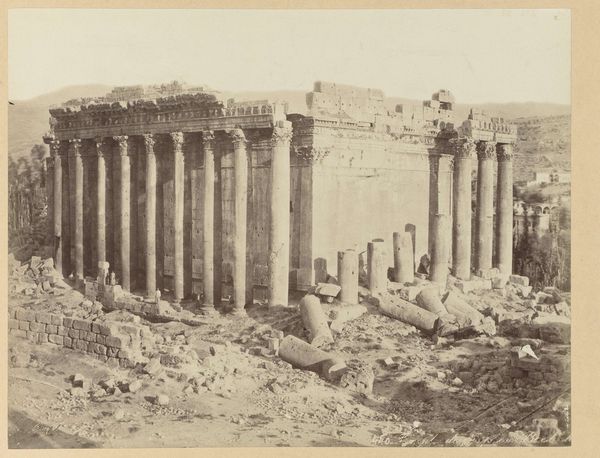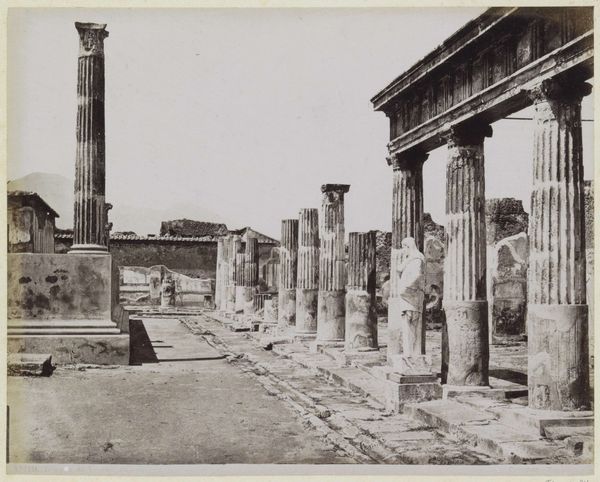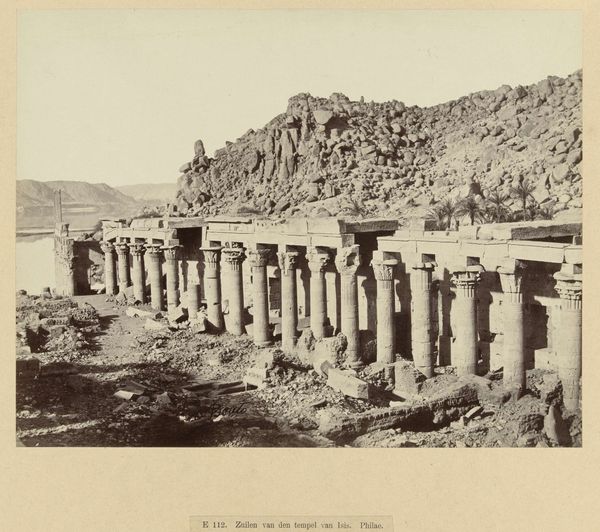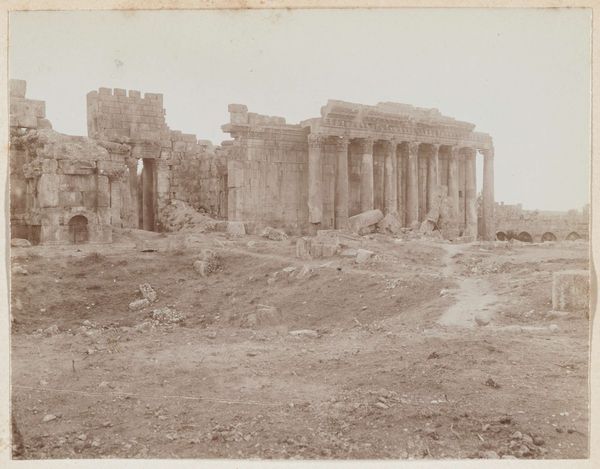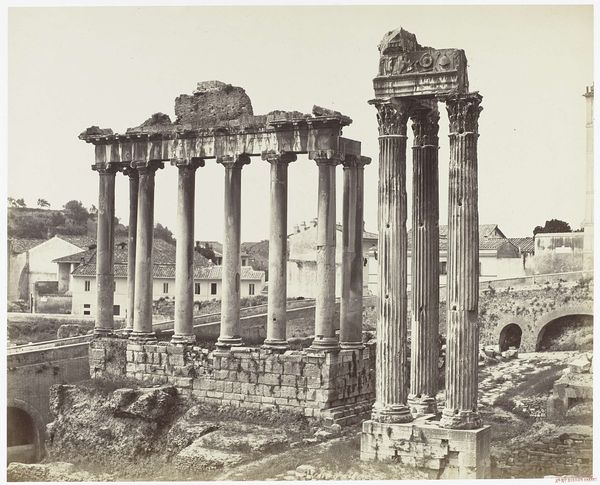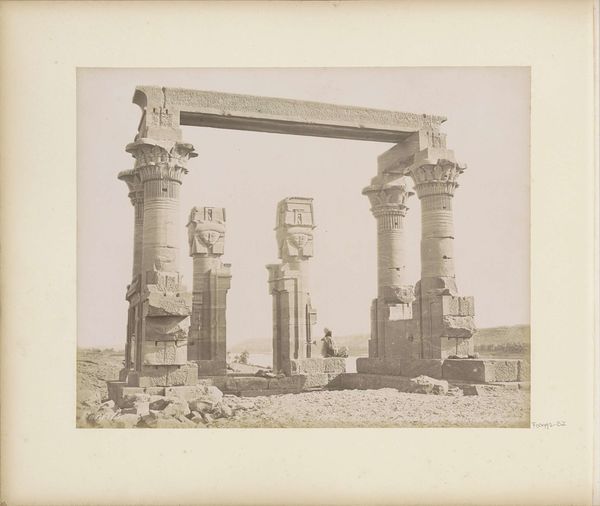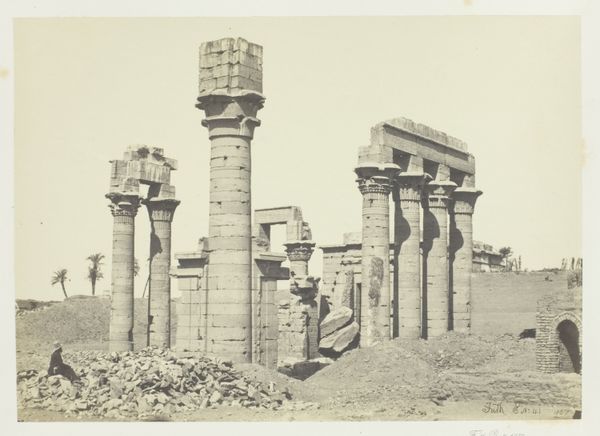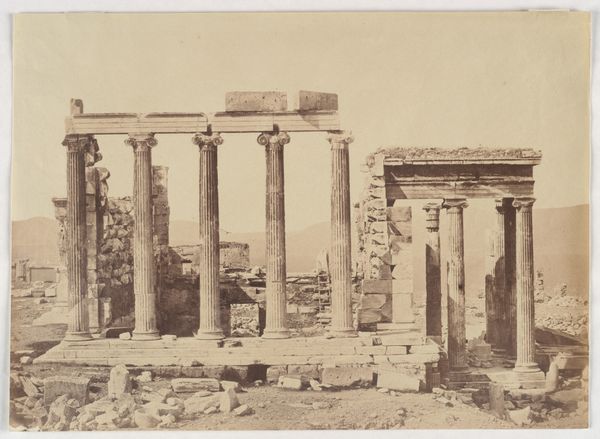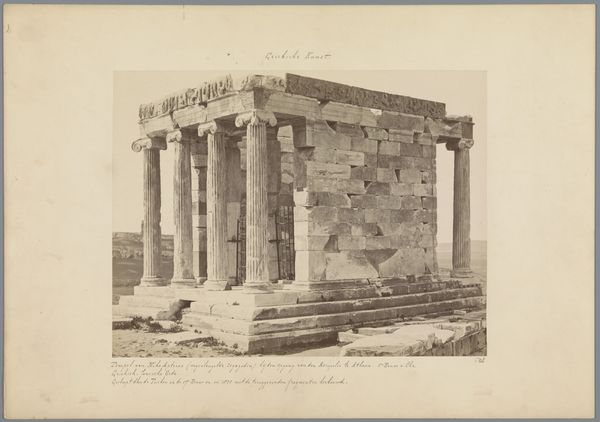
photography
#
landscape
#
photography
#
ancient-mediterranean
Dimensions: height 206 mm, width 256 mm, height 309 mm, width 507 mm
Copyright: Rijks Museum: Open Domain
Curator: Giuseppe Incorpora's photograph, "N. 337 Tempio di Giunone e Lucina," taken somewhere around 1893 and 1903, presents us with a striking view of the Temple of Juno Lacinia, or Hera Lacinia as the Greeks knew her, in Agrigento, Sicily. The photograph asks us to consider the social implications of archaeological sites and how they relate to shifting power dynamics over centuries. Editor: You know, I’m struck immediately by the image's ghostly quality. It feels almost…ethereal, like we're peering through a veil into the past. All those weathered columns, half-standing, they evoke a sense of both grandeur and inevitable decay. It's kind of poetic, in a morbid way. Curator: Indeed, the ruin is central to the impact here. The fragmentation of the Temple raises key questions of heritage and national identity that were forming as this photo was produced. For example, who has the power to claim such ruins as their origin story? And how do the photographs of Incorpora facilitate this construction of modern Sicilian identity? Editor: It also sparks thoughts about temporality, right? Like, what did the people who worshipped in this temple feel, what did they believe in? And how does it relate to modern belief systems and how things change but some core thing remains? Curator: The goddess Juno herself offers a valuable feminist entry point. Her veneration underscores the important role women played in ancient Sicilian society, countering the patriarchal narratives often imposed by later historians. What can this image tell us about matriarchal power? Editor: Hmmm… I also notice the photographer really uses the light, shadows dance through the columns and create depth. The monochrome palette highlights texture – the rough-hewn stones, the almost velvet sky… You almost want to reach out and touch the old stones. Curator: Exactly. That visual language must be placed within the larger narrative of Orientalism and the construction of the so-called "West". Early photographs of antiquity fueled biased understandings of classical history, often privileging European interpretations of culture and history. Editor: Right. Well, whether used to create nationalist mythologies, or simply as inspiration to reflect on bigger things… Giuseppe Incorpora's image really grabs me. It's more than just documentation, you know? It feels like a story etched in stone. Curator: Ultimately, the value lies in the image’s power to connect us with broader struggles concerning power, interpretation, and the reclaiming of history. I think you put it nicely there, and its lasting impact transcends time.
Comments
No comments
Be the first to comment and join the conversation on the ultimate creative platform.
